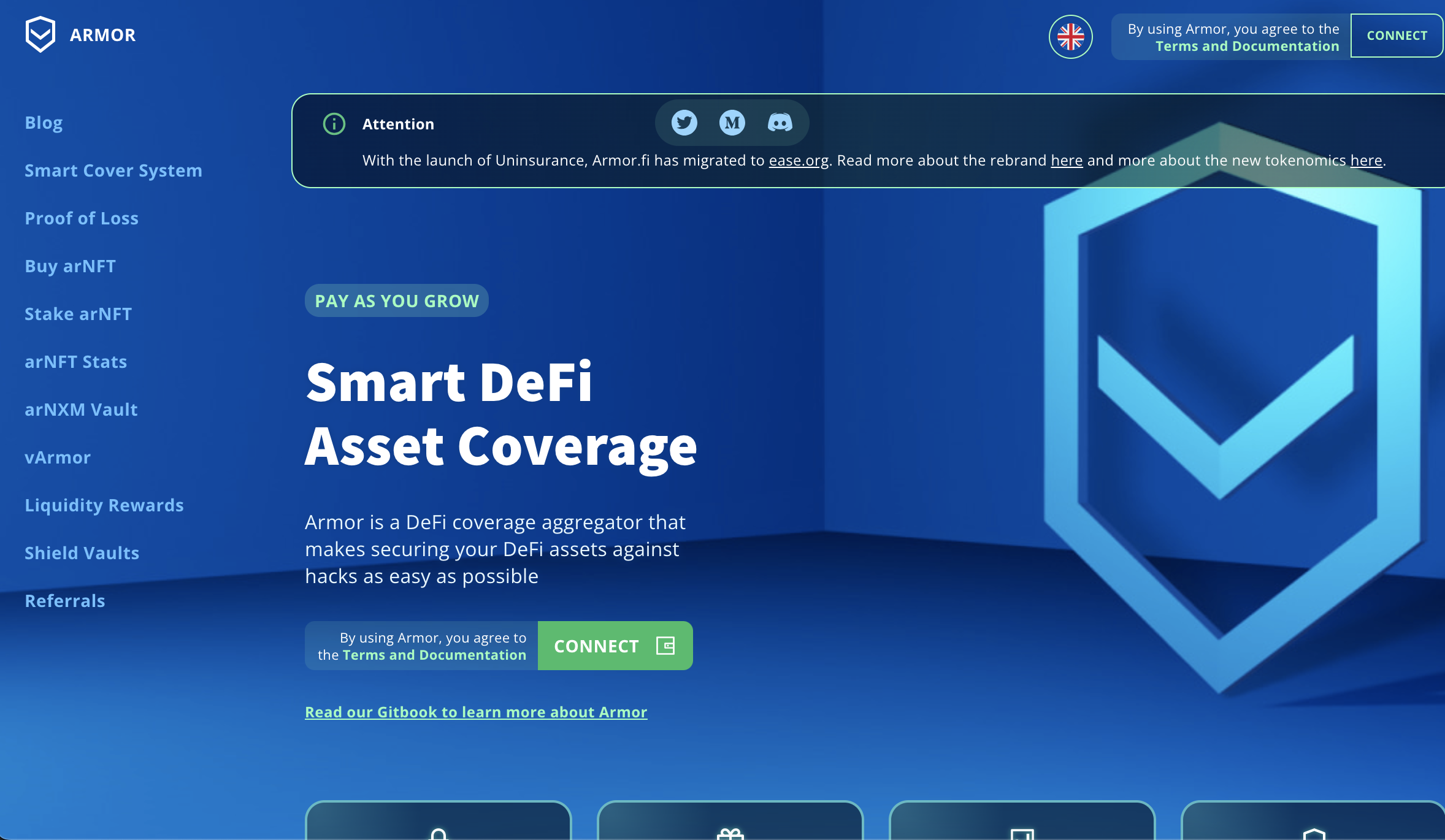Is Armor.fi a Scam? Honest Review for Crypto Investors
In the fast-moving world of decentralized finance (DeFi), new platforms emerge almost every week, promising investors higher yields, better transparency, and stronger security. However, with opportunity also comes risk, and unfortunately, scams have become common in this space. One platform that has drawn increasing criticism and suspicion is armor.fi.
This review takes a closer look at the project, examining how it operates, the red flags surrounding it, and why many users have concluded that it is not a legitimate opportunity.
What is Armor.fi?
Armor.fi was introduced as a DeFi platform designed to provide insurance solutions for smart contract users. The idea sounded promising: protect investors’ assets across multiple protocols by offering pay-as-you-go coverage without locking users into long-term commitments.
At first glance, Armor.fi positioned itself as a safety net for DeFi investors worried about protocol exploits and hacks. The project claimed to rely on advanced mechanisms that would make decentralized insurance easier and more flexible than traditional coverage options.
While the concept appealed to many, execution and transparency quickly became questionable.
The Allure of DeFi Insurance
The DeFi boom has been a double-edged sword. On one hand, it has unlocked unprecedented access to financial tools, passive income opportunities, and borderless transactions. On the other, it has exposed users to vulnerabilities: smart contract bugs, rug pulls, and liquidity crises.
Armor.fi entered the market at a time when users were desperate for reassurance. The promise of being able to participate in yield farming, staking, and liquidity mining while having insurance coverage sounded too good to pass up. This “peace of mind” branding strategy is what attracted early adopters.
Unfortunately, beneath the appealing marketing, cracks started to appear.
Red Flags from the Start
Although Armor.fi looked polished, investors began noticing several warning signs that suggested the platform was not as trustworthy as it seemed.
1. Lack of Transparency
A hallmark of legitimate DeFi projects is openness. Developers typically reveal their identities, share roadmaps, and keep communities informed through transparent governance. Armor.fi, however, operated with vague promises and unclear leadership. The lack of verifiable accountability was one of the earliest red flags.
2. Overly Complex Mechanisms
Armor.fi promoted complex pay-as-you-go insurance models that the average investor struggled to fully understand. Scammers often rely on confusing terminology and elaborate explanations to discourage users from asking deeper questions. The project’s lack of clear documentation only fueled suspicion.
3. Unrealistic Promises
The platform claimed it could provide comprehensive coverage at lower costs than competitors while still generating profits. In practice, this was mathematically questionable. DeFi insurance relies heavily on risk pools, and no transparent proof was ever shown that Armor.fi could sustain payouts in the event of large-scale claims.
4. Community Complaints
As time went on, more users began sharing negative experiences, ranging from delayed withdrawals to inaccessible funds. A pattern emerged: when investors tried to exit, they encountered barriers, excuses, or technical “errors” that conveniently worked against them.
How the Scam Worked
Like many deceptive platforms, Armor.fi relied on a mix of technical jargon, community hype, and psychological tactics to draw people in. Here’s how the scheme appeared to operate:
-
Attracting Users Through Security Promises
The promise of insurance coverage appealed to risk-averse investors. By presenting itself as a safeguard rather than a speculative investment, Armor.fi tapped into users’ desire for protection in a risky market. -
Leveraging FOMO (Fear of Missing Out)
The project frequently hinted at new updates, partnerships, or limited-time opportunities. This encouraged people to join quickly without fully researching the platform. -
Locking In Funds
Users who deposited into the platform found that retrieving their funds wasn’t as straightforward as advertised. Withdrawal requests often stalled or failed, creating anxiety but also pressuring users to remain invested. -
Using Community Channels for Control
Armor.fi managed its online communities carefully. Complaints were downplayed, deleted, or dismissed, while positive comments were amplified. This tactic created an illusion of legitimacy for newcomers, even as long-time users raised concerns.
The Impact on Investors
For those who believed in Armor.fi’s vision, the consequences were harsh. Many users lost significant amounts of cryptocurrency, funds that cannot be easily recovered in the decentralized ecosystem. Unlike traditional banks, there are no consumer protection mechanisms or regulators overseeing such projects.
The emotional toll has been equally heavy. Victims report feelings of betrayal, frustration, and helplessness. For some, Armor.fi was their first introduction to DeFi, leaving them disillusioned with the broader blockchain industry.
Comparing Armor.fi with Legitimate Platforms
It’s important to highlight how Armor.fi differs from established and trustworthy DeFi projects.
-
Reputation & Track Record: Legitimate DeFi insurance providers are transparent about claims history and risk pools. Armor.fi never produced verifiable proof of payouts.
-
Governance: Reputable projects operate under decentralized governance models, allowing token holders to vote on key decisions. Armor.fi’s governance system was opaque and inconsistent.
-
Community Engagement: Healthy projects welcome criticism and build trust through open dialogue. Armor.fi, by contrast, suppressed dissent and silenced concerns.
These differences underline why Armor.fi stands out as a scam rather than a legitimate venture.
Why Do People Still Fall for DeFi Scams?
The case of Armor.fi is not unique. Many DeFi scams share similar traits, and understanding investor psychology helps explain why such schemes succeed:
-
Greed and Hope – People want quick returns or reliable protection and are willing to overlook warning signs.
-
Trust in Technology – Blockchain is often equated with transparency and security, leading users to assume all DeFi projects are safe.
-
Community Hype – Online groups can create echo chambers that make scams seem legitimate.
-
Fear of Missing Out – Limited-time offers and early-bird incentives pressure users into acting hastily.
By exploiting these psychological factors, platforms like Armor.fi can continue to attract victims.
Lessons Learned from Armor.fi
The downfall of Armor.fi carries important lessons for anyone considering investing in DeFi projects:
-
Do Your Research: Never rely solely on marketing materials or community chatter. Verify information through independent sources.
-
Check Team Transparency: Avoid platforms that conceal leadership identities or provide little documentation.
-
Scrutinize the Business Model: If promises sound too good to be true, they probably are.
-
Test Small Amounts First: Never commit large sums to an unproven platform. Start with minimal investments to test withdrawals and functionality.
-
Stay Skeptical of Hype: Be cautious of projects that silence critics or overemphasize community excitement.
The Broader Problem of DeFi Scams
Armor.fi is just one of many examples of fraudulent platforms eroding trust in decentralized finance. While innovation continues to thrive in the space, the lack of regulation and oversight means investors must shoulder greater responsibility for due diligence.
Scams like Armor.fi not only hurt individuals but also tarnish the reputation of legitimate projects striving to build sustainable solutions. Until stronger consumer protections or self-regulatory frameworks emerge, users must remain vigilant.
Conclusion
Armor.fi entered the DeFi scene with a bold promise: to provide flexible, affordable insurance coverage for crypto investors. While the concept was appealing, the platform ultimately revealed itself to be deceptive. Through lack of transparency, unfulfilled promises, and negative user experiences, Armor.fi has become a cautionary tale of what can go wrong in decentralized finance.
For investors, the key takeaway is clear: approach every DeFi platform with skepticism until it proves itself trustworthy. The lessons learned from the Armor.fi scam can help prevent future losses and encourage more responsible participation in the evolving digital asset space.
-
Report. Armor.fi And Recover Your Funds
If you have lost money to aarmor.fi, it’s important to take action immediately. Report the scam to BRIDGERECLAIM.COM , a trusted platform that assists victims in recovering their stolen funds. The sooner you act, the better your chances of reclaiming your money and holding these fraudsters accountable.
Scam brokers like armor.fi continue to target unsuspecting investors. Stay informed, avoid unregulated platforms, and report scams to protect yourself and others from financial fraud.





